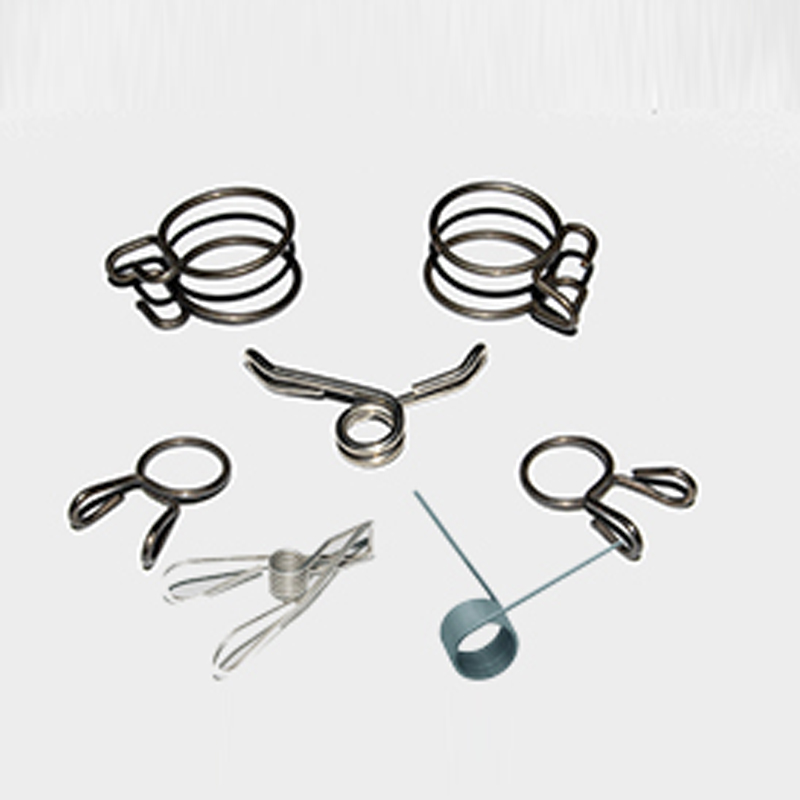
- Mobile Phone
- +8613931874955
- sales@cntcmetal.com
6mm compression spring
Understanding 6mm Compression Springs Applications, Manufacturing, and Benefits
Compression springs are mechanical devices designed to oppose compressive forces, and they are widely used in various applications across different industries. Among the various sizes and types, 6mm compression springs are particularly notable for their compact size, which makes them ideal for applications requiring limited space. This article will explore the characteristics, manufacturing process, applications, and benefits of 6mm compression springs.
Characteristics of 6mm Compression Springs
A 6mm compression spring is defined by its diameter—specifically, a spring with a coil diameter of 6mm. The specifications of these springs can vary widely, such as wire diameter, total number of coils, free length, and material composition. These dimensions will directly influence the spring's load-bearing capacity, deflection, and overall performance characteristics.
Common materials for manufacturing compression springs include stainless steel, music wire, and oil-tempered carbon steel, each offering different levels of corrosion resistance, strength, and elasticity. The choice of material can depend on the specific application requirements, including environmental factors such as temperature, humidity, and potential exposure to chemicals.
Manufacturing Process
The production of 6mm compression springs typically involves several key steps
1. Wire Preparation The process begins with selecting the appropriate wire material. The wire is then drawn down to the desired diameter before being cut to length based on the design specifications.
2. Coiling The prepared wire is wound into a helical shape using specialized coiling machines. Precision is critical here, as the tightness and uniformity of the coils will influence the spring's performance characteristics.
3. Heat Treatment After coiling, the springs often undergo heat treatment processes such as annealing or hardening. This step is essential for improving the mechanical properties of the springs—enhancing their strength, elasticity, and durability.
4. Finishing The final stage includes surface treatments like shot peening, plating, or coating to enhance corrosion resistance and surface finish. This step not only improves the appearance of the spring but also prolongs its life during usage.
5. Testing Quality control measures ensure that the springs meet specific standards. Tests may include measuring the spring rate, load testing, and dimensional inspections to ensure they conform to the specified criteria.
6mm compression spring

Applications of 6mm Compression Springs
Thanks to their compact size, 6mm compression springs find uses in various industries and applications
- Automotive Industry In cars and motorcycles, these springs can be found in suspension systems, engine components, and safety mechanisms like airbags. - Electronics Many electronic devices, from keyboards to mobile phones, utilize small compression springs to provide feedback, maintain pressure, or facilitate movement in mechanical parts. - Medical Devices In the medical field, these springs are employed in devices such as syringe pumps, inhalers, and diagnostic equipment, ensuring reliable performance in critical applications.
- Home Appliances Compression springs are common in appliances like coffee machines, toasters, and vacuum cleaners, where they help in various mechanical functions such as lid closures and switch mechanisms.
Advantages of 6mm Compression Springs
The use of 6mm compression springs offers numerous benefits
- Space Efficiency Their small size allows for compact designs, making them ideal for applications with limited available space. - Versatility They can be customized extensively to fit a wide range of mechanical needs, accommodating various load requirements and operational characteristics.
- Cost-Effective Although high precision is involved in manufacturing, the materials used and the automation in production processes help keep costs relatively low.
- Durability With the right material and proper heat treatment, these springs demonstrate excellent fatigue resistance, making them ideal for applications where they are subjected to cyclic loads.
Conclusion
6mm compression springs play a vital role across various industries, offering efficient performance in compact designs. Understanding their characteristics, manufacturing processes, applications, and benefits can help engineers and designers select the right spring for their specific needs. As technology continues to advance, the demand for such specialized components is likely to grow, driving further innovation in spring design and manufacturing.
share:
-
Why Sacrificial Formwork Is Redefining Underground ConstructionNewsJun.06,2025
-
The Structural Dynamics of Modern Concrete: How Snake Spacers Revolutionize Flexible ReinforcementNewsJun.06,2025
-
Snake Spacers Smart-Lock Concrete Reinforcement with Surgical PrecisionNewsJun.06,2025
-
Snake Spacers: Reinforcement Precision for Modern Concrete ProjectsNewsJun.06,2025
-
Snake Spacers Powering Concrete's Structural DNANewsJun.06,2025
-
Slither into Success: Snake Spacers' Precision Bite for Unbreakable ReinforcementNewsJun.06,2025
-
Sacrificial Formwork: Building Stronger, Faster, and Safer StructuresNewsJun.06,2025



















